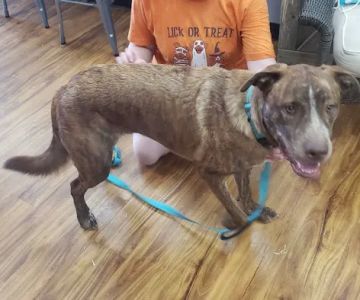- 1 - Understanding Pet Anxiety at the Vet
- 2 - Preparing Your Pet Before the Vet Visit
- 3 - Using Positive Reinforcement During Training
- 4 - Creating Familiarity with the Vet Environment
- 5 - Calming Techniques During the Vet Visit
- 6 - Real Stories of Successful Pet Training for Vet Visits
1. Understanding Pet Anxiety at the Vet
Many pets experience anxiety during veterinary visits, which can manifest as shaking, whining, aggression, or refusal to cooperate. This stress often stems from unfamiliar sights, smells, and sounds, combined with negative past experiences. Understanding the causes of pet anxiety is the first step toward training your pet to be calm at the vet.
Recognizing your pet’s signs of stress early allows you to intervene with appropriate techniques that reduce anxiety and build trust over time.
2. Preparing Your Pet Before the Vet Visit
Preparation starts at home, days or even weeks before the appointment. Begin by handling your pet regularly—touch their paws, ears, and mouth gently to mimic vet examinations. This desensitization helps reduce fear during actual checkups.
Introduce your pet to carriers or travel crates positively, associating them with treats and comfort. Short practice trips in the car can also familiarize your pet with the journey to the vet, reducing travel-related stress.
3. Using Positive Reinforcement During Training
Positive reinforcement is a powerful tool when training your pet to stay calm. Reward calm behavior with treats, praise, or play to encourage relaxation. Avoid punishment, which can increase fear and resistance.
For example, during mock exam sessions, reward your pet for staying still or responding calmly to touch. Gradually increase the duration and complexity of these sessions to build tolerance.
4. Creating Familiarity with the Vet Environment
If possible, visit the veterinary clinic ahead of time for a casual meet-and-greet. Let your pet explore the waiting area and meet staff in a non-threatening way. This exposure helps turn the clinic into a less intimidating place.
Many clinics now offer low-stress handling and have designated quiet spaces for anxious pets. Communicate your concerns with your vet to utilize these resources effectively.
5. Calming Techniques During the Vet Visit
During the visit, use calming aids such as pheromone sprays, anxiety wraps, or calming supplements recommended by your veterinarian. Gentle handling, soft voices, and slow movements also soothe your pet.
Bring familiar items like a favorite blanket or toy to comfort your pet. For extremely anxious animals, veterinarians may recommend mild sedation to ensure a safe and stress-free exam.
6. Real Stories of Successful Pet Training for Vet Visits
One dog owner shared how consistent positive reinforcement transformed her anxious retriever into a calm patient. By practicing gentle handling and rewarding calm behavior over several weeks, vet visits became less stressful for both.
Another cat owner credited early carrier training and pre-visit clinic visits for helping her feline friend remain composed during exams. These real-life examples highlight that with patience and strategy, training pets to be calm at the vet is achievable.
For expert advice on how to train your pet to be calm at the vet and access to calming products, visit Hidden Brook Veterinary. Their knowledgeable team offers tailored solutions to make vet visits smoother and less stressful for you and your pet.











